15 Best Headless CMS to Stay Ahead of the Curve in 2025
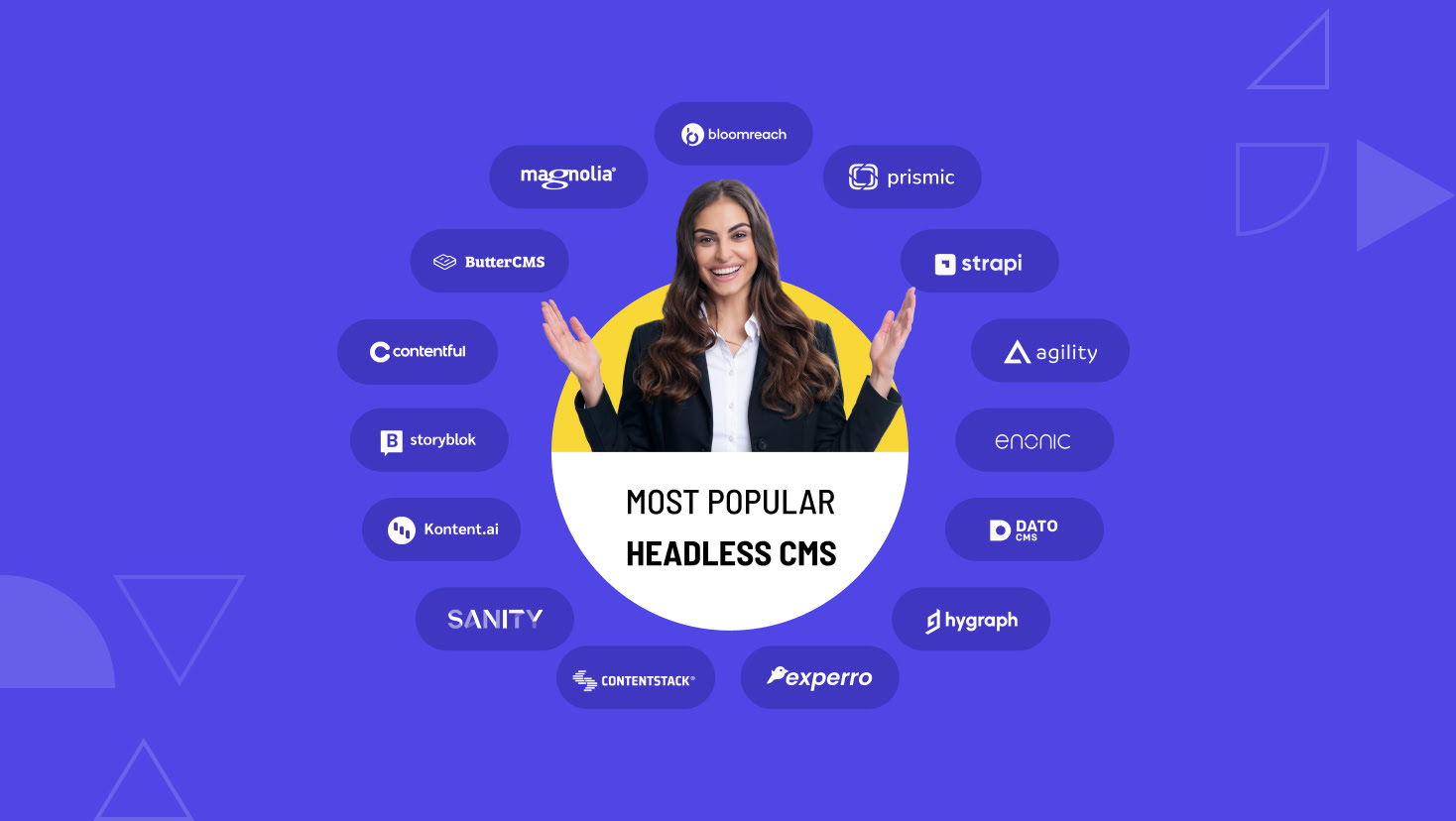
What’s Inside
- How Do Headless Content Management Systems Work?
- 15 Best Headless Content Management System In the Market
- Experience a Remarkable Transformation in Your Digital Presence
- Experience the Robust Content Management Capabilities and Beyond to Excel in Digital Journey!
- Conclusion
Summary
- For making an informed choice to elevate your content game, organizations must go through the headless CMS options.
- The list of the 15 best headless CMS options to keep you at the forefront of modern content management.
- Explore these cutting-edge platforms based on prices, features, pros, cons, and ratings.
It's the era of voice assistants, smart watches, and IoT devices.
Most people are familiar with the concept of what is headless CMS. And it isn't just a buzzword anymore but a prominent platform to sustain and excel in the digital journey.
With greater flexibility, scalability, omnichannel support, and the ability to meet modern-day customer expectations, headless CMS is a winning product that marketers love!
Did you know? 82% of marketers believe switching to headless CMS has positively impacted their business improving time, budget, and productivity. As headless CMS adoption is gaining momentum among marketers, we appreciate your recognition of its importance within the rapidly evolving digital landscape.
Unsurprisingly, in 2023, the global CMS market reached 19.38 million dollars; by 2028, it is expected to reach 27.30 billion.
There are many headless CMS options available in the market. Each claiming superiority, it's important to note that only a few platforms encompass the features to meet your content management needs.
That is why, in this blog, we have carefully curated a list of the 15 best headless CMS trusted by leading brands to manage your content game like a pro! However, before exploring that, let's understand how headless CMS works.
Knowledgeable Read! - DXP vs Headless CMS
How Do Headless Content Management Systems Work?
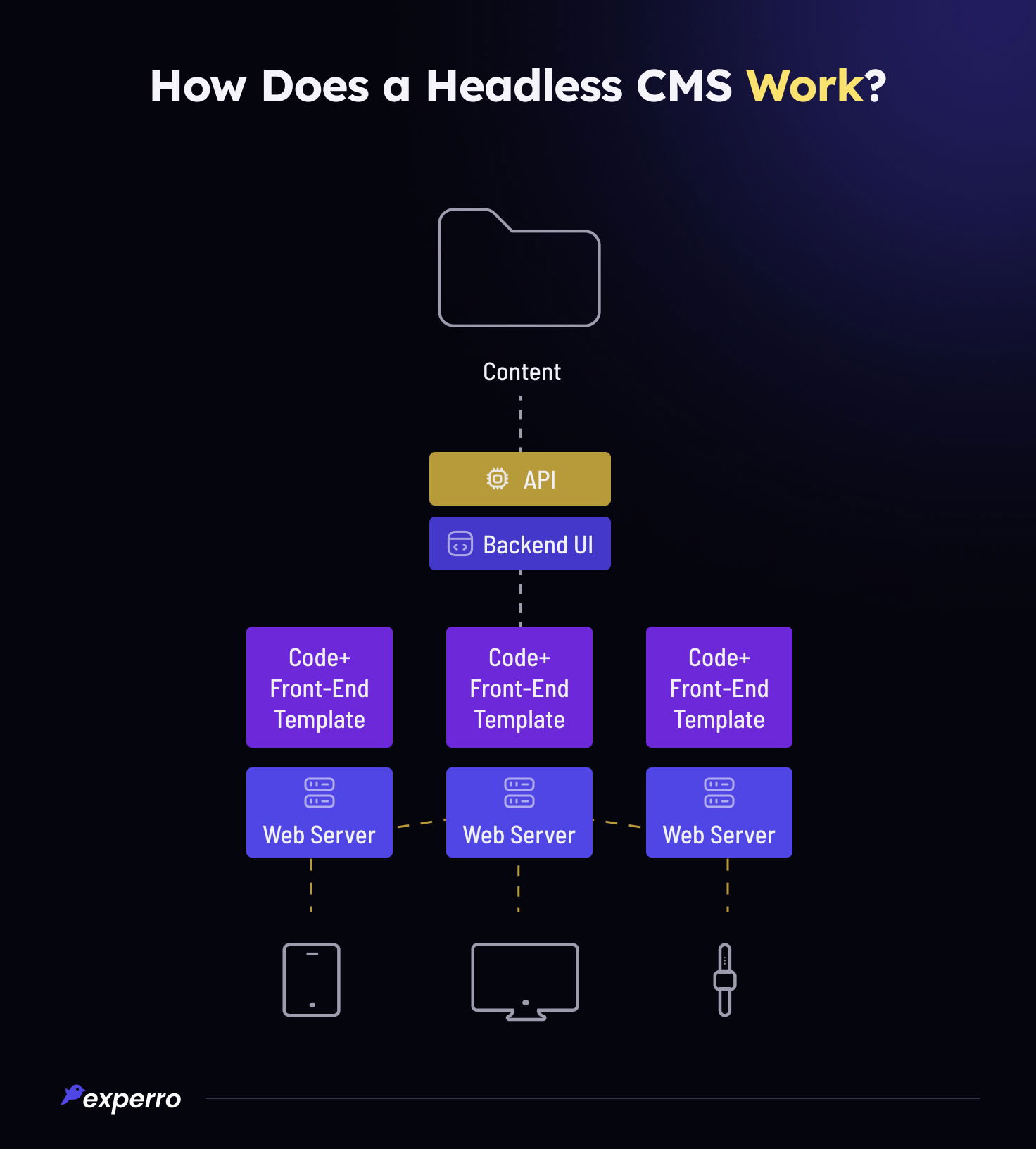
Headless CMS is like your behind-the-scenes wizard. Working round the clock to spread its magic on websites, social media, mobile applications, and more. You just need to work on your strategies; your chosen headless CMS will cover the rest.
Let's understand how the magic of headless CMS works in the digital realm...
As the name suggests, headless CMS doesn't have a head, aka frontend (presentation layer), unlike traditional content management systems. Losing the head allows the system to choose any frontend option of your choice. How cool is that!
It makes the system more scalable and flexible CMS than monolithic systems. On the other hand, traditional CMS platforms pose challenges regarding flexibility and scalability. That's where the difference between headless vs traditional CMS comes into play.
The headless CMS approach for managing content involves storing content in a structured way, often using rest API (Application Programming Interface) and databases. It allows organizations to edit and deliver content over multiple digital touchpoints, including websites, mobile apps, and social media apps.
After you are convinced about the splendid headless CMS benefits, let's dive into the curated list of the 15 best headless CMS.
15 Best Headless Content Management System In the Market
Going through the most popular headless CMS list will allow you to decide which headless CMs is the best based on prices, pros and cons, and notable headless CMS features. Without further ado, let's dive into each one and compare headless CMS for you.
1. Experro
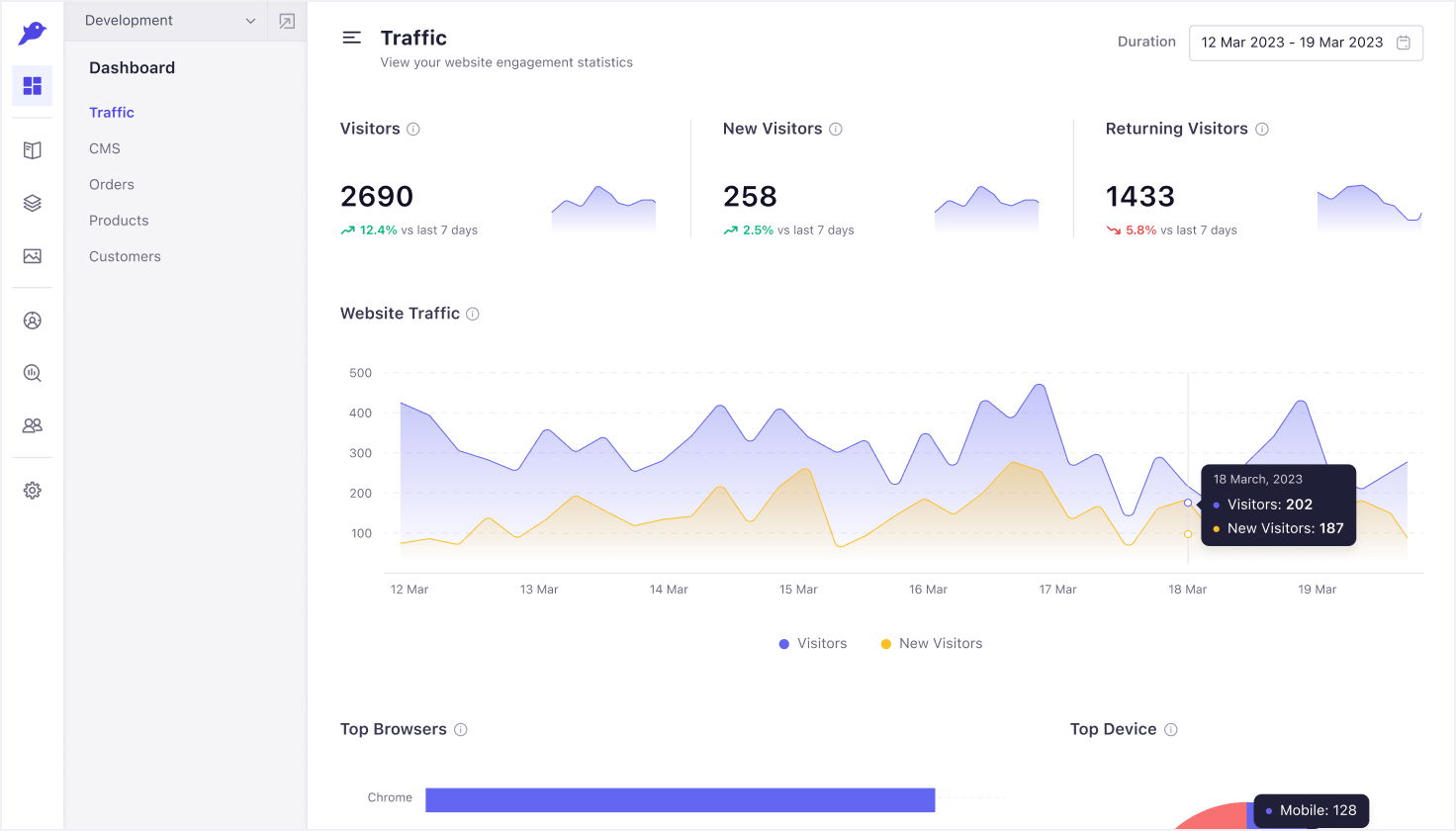
Experro is one of the best headless CMS platforms offering powerful tools that help businesses create a WOW shopping experience for customers. It caters to B2B, B2C, and D2C business models.
Most importantly, it offers hyper-personalization capabilities to provide the most relevant content to the target audience.
Moreover, Experro headless CMS use cases offer seamless content on multiple devices and channels, overcoming all the limitations of traditional content management systems. Experro aims to let organizations focus on creating high-impact customer experiences and takes care of complex tech stack.
It is easy to develop, flexible and has no steep learning curve for devs. Experro, being the fastest headless CMS, believes in adopting a highly customer-centric approach with the speed of content delivery and personalization.
Notable Features of Experro
- AI-powered search to provide better search results.
- Analytics and insights for tracking user behavior.
- Blazing-fast storefronts that drive conversions.
- Localization for a global audience.
- Content preview to see real-time content changes.
- Effortless integration with third-party applications.
- Role-based access control to enhance security and simplify management.
Experro Bonus Features! 🌟
- Experro can now integrate with eCommerce platforms by building eCommerce stores on Shopify and BigCommerce!
Pros of Experro
- Offers preferred frontend framework option.
- Dedicated experts and round-the-clock support for every stage of your development journey.
- Provides hyper-personalization capabilities.
- Enhanced scalability – no downtime, even on high-traffic days.
- Effortless content reusability with modular content blocks.
- Enhanced omnichannel content delivery to reach a wider audience.
Cons of Experro
- It is by far the easiest headless CMS. Getting started is easy. However, it requires little technical knowledge to integrate other platforms with it.
Headless CMS Review
Experro is an exceptionally robust headless CMS. It has the desired set of features and integrates seamlessly with third-party applications. Moreover, it provides integration with Shopify and BigCommerce online stores.
Source - G2 review
Pricing
- Available upon request.
2. Agility
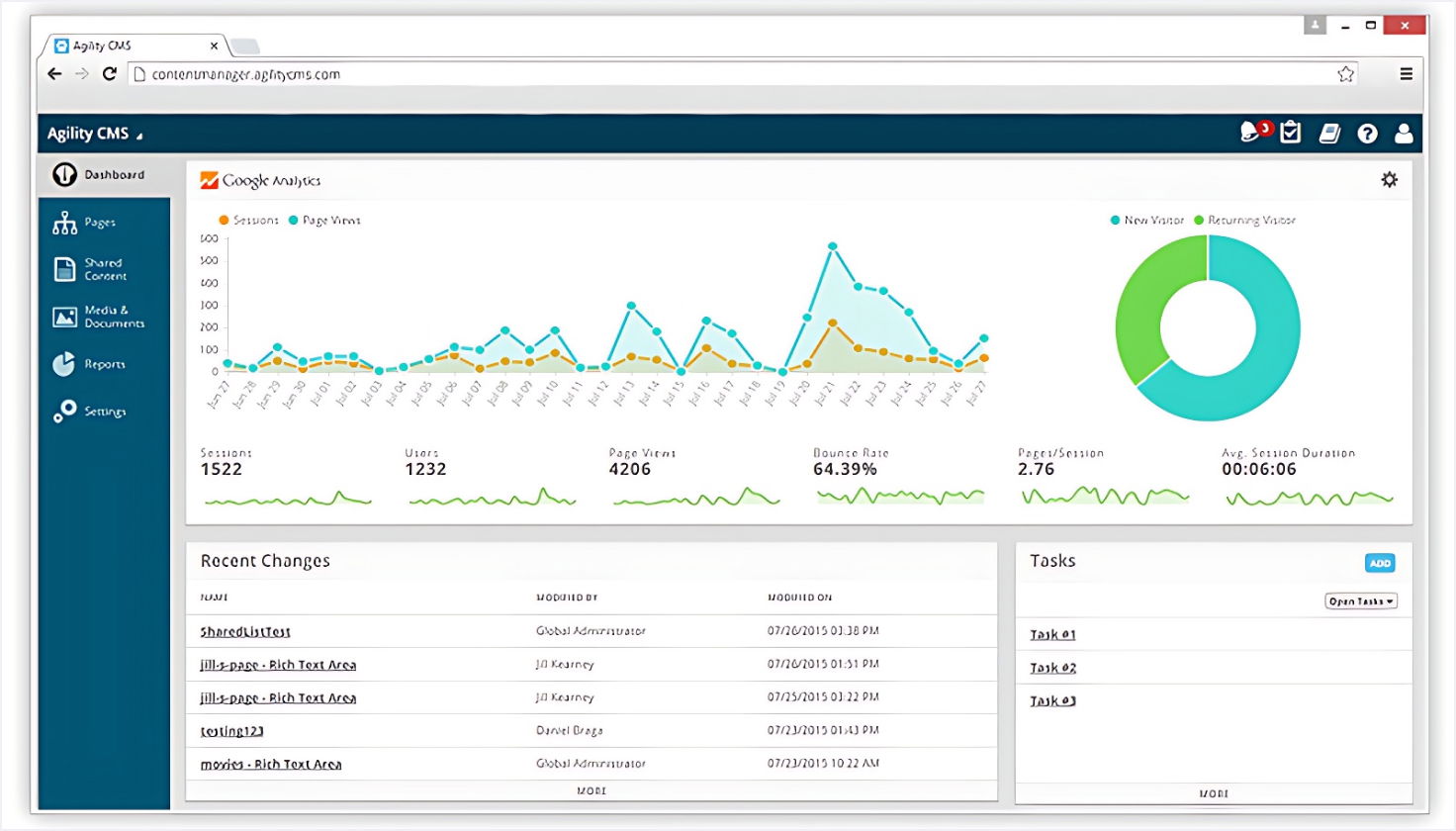
Agility is another popular headless CMS trusted by several brands worldwide. It empowers businesses to create and distribute content across all digital channels efficiently. It supports English, French, and Spanish languages.
The separated architecture of Agility CMS supports developers to display content with the preferred programming language. It has a cloud-native API-first architecture to ensure scalability. Moreover, it claims to be the fastest and most flexible headless CMS.
Notable Features of Agility
- Workflow management to streamline content creation, editing, and approval.
- Content analytics to provide valuable insights on user engagement.
- Version history to track content changes.
- Multi-language capability to reach out to a global audience.
Pros of Agility CMS
- Intuitive user interface.
- Flexible content modeling for specific requirements.
- Robust custom roles.
Cons of Agility CMS
- Limited documentation for advanced features.
- Compatibility with the server could be better.
- Limited functionality for rebuilding layout pages.
- Poses limitations in website designs and layouts of web pages.
Review
A flexible and modern CMS with an impressive user editor providing a WYSIWYG experience. While the platform is easy to use, some complex tasks need more guidance.
Source - G2 review
Pricing
- Starter - $1249
- Pro – $2499
- Custom – Contact sales.
3. Hygraph
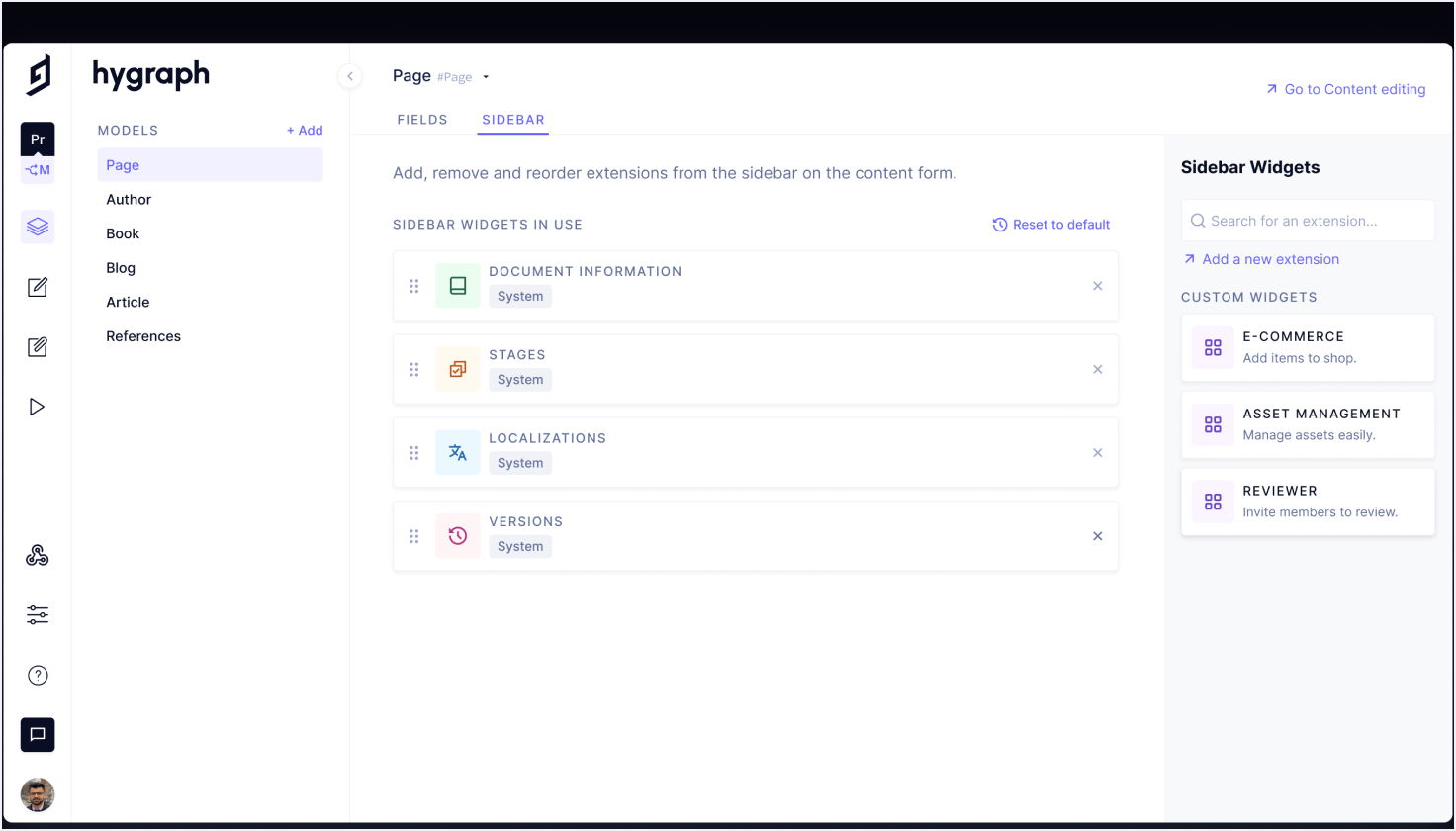
Hygraph, formally known as GraphCMS, is one of the best headless CMS solutions. It is based on content federation features. It allows organizations to source content on a multitude of devices. Hygraph's codebase is available on GitHub and supports React, Vue and Next.js, Gatsby, and Nuxt.
It aims to build a scalable headless CMS that delivers seamless content. Several global brands around the world trust it.
Notable Features of Hygraph
- API-based content delivery.
- Access control and permissions.
- Asset lifecycle management.
- Version control and text editing.
- Global content distribution.
Pros of Hygraph
- User-friendly platform.
- Seamless integration with third-party applications.
Cons of Hygraph
- Lack of customization to alter different modules.
- A live preview is unavailable to see content changes and formatting.
- It's not an SEO-friendly platform.
- The complex process for updating data in localized fields.
Review
Although Hygraph has impressive customer support, they lack resources for integrating Hygraph using Python.
Source - G2 Review
Pricing
- Starts at $299 per month.
4. Contentful
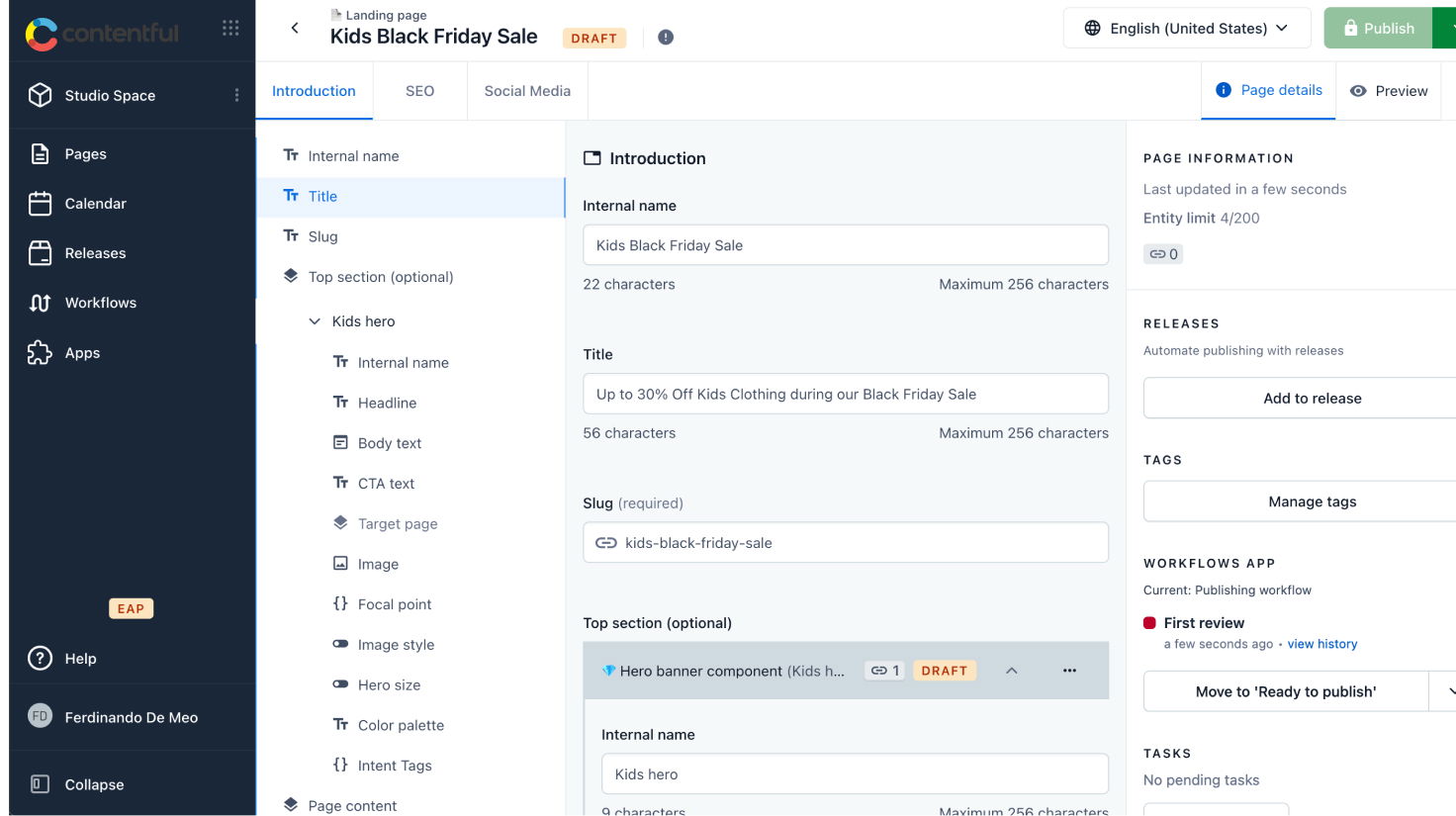
Contentful is another popular cloud-based headless CMS solution. It is an API-driven headless CMS. It allows you to create content once and deliver it across various digital platforms seamlessly. It has a robust app ecosystem to extend the platform easily.
Moreover, Contentful offers a pre-built integrations feature to integrate with your favorite third-party tools.
Notable Features of Contentful
- Powerful third-party integration.
- In-built starter templates for beginners.
- AWS-based server infrastructure.
Pros of Contentful
- Extensive documentation.
- Robust API, SDK, and a vast ecosystem integration.
Cons of Contentful
- It's not a very user-friendly platform.
- Requires much assistance of developers.
- Free and basic plans have limited users.
- A smaller number of templates are available.
- There is no grouping option for content models.
Tip! - Unlock new possibilities by seamlessly migrating your Contentful website to Experro.
Review
You can filter multiple parts and functions of the website. There are many features that Contentful only helps if you update to a newer version. Moreover, uploaded images lose their quality.
Source - G2 review
Pricing
- Starts at $300 per month
5. ButterCMS
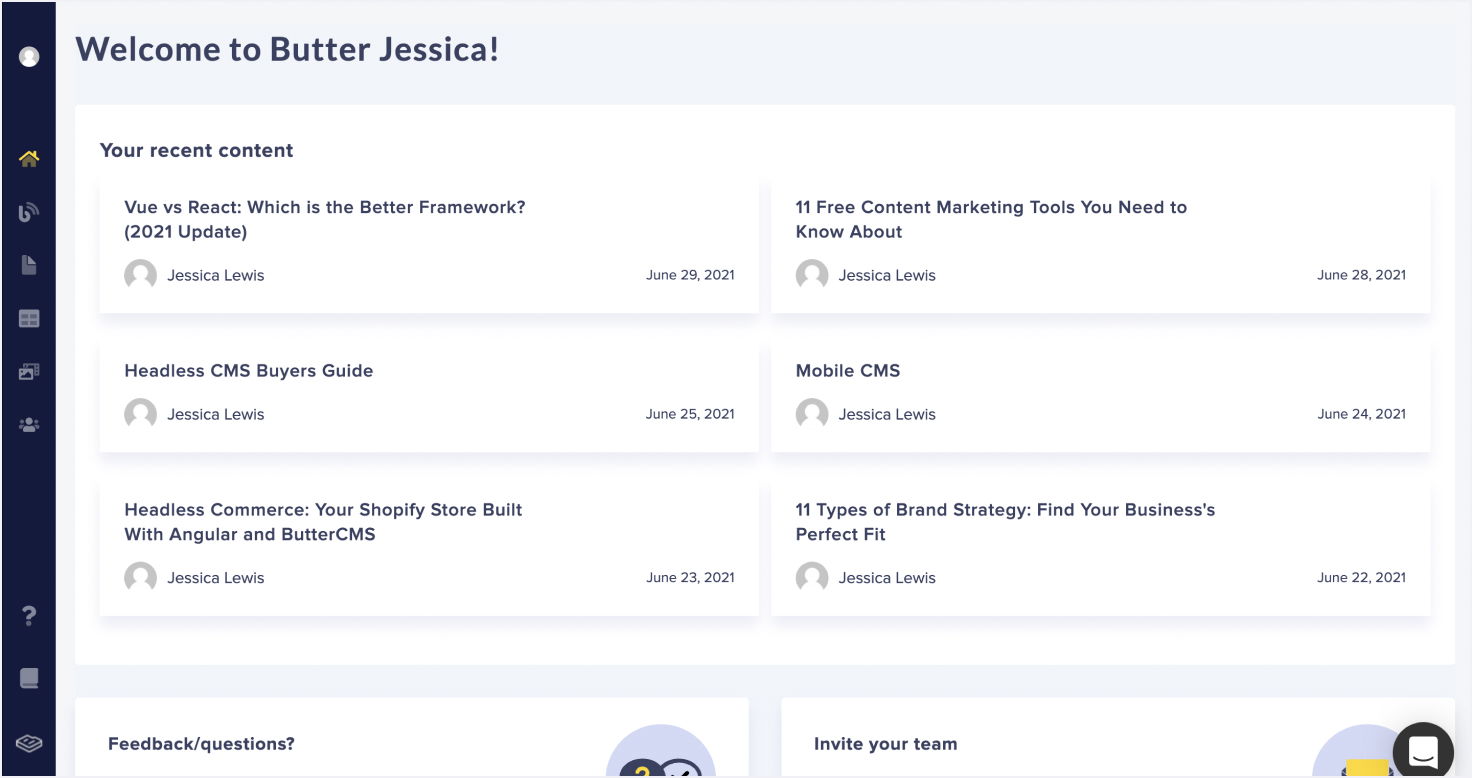
Butter CMS is a top headless CMS with fast APIs. It is designed to help developers and content creators build and manage websites and blogs easily. It provides a user-friendly interface for content editing and supports various programming languages. Moreover, it offers powerful customization for content creators and editors.
Notable Features of Butter CMS
- Built-in SEO tool.
- Easy management of content types.
- Custom field validation.
Pros of ButterCMS
- Straightforward and easy-to-use interface.
- Extensive personalization capabilities.
- Offers a wide range of configuration choices.
Cons of ButterCMS
- Limited feature compared to other CMS. Not be sufficient for more complicated websites.
- Insufficient third-party plugins.
- Lacks advanced features.
- Blog content type does not support localization.
Review
Butter CMS has a straightforward user interface. Yet, it has limited features and insufficient third-party plugins compared to other content management systems.
Source - G2 Review
Pricing
- Micro - $99
- Startup - $199
- Small business - $375
- Enterprise – Custom
6. Bloomreach
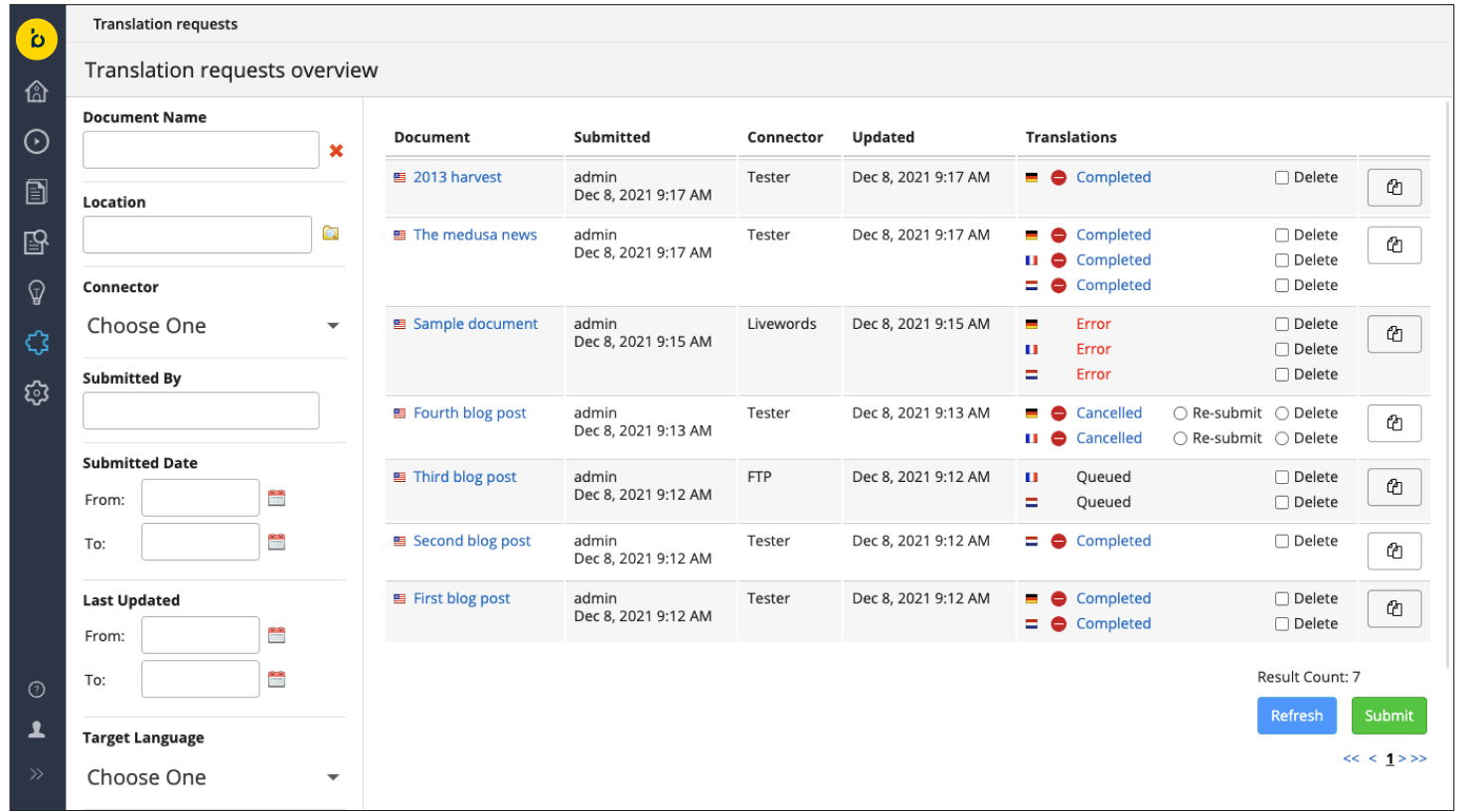
Bloomreach is another popular headless content management system that offers a set of features to enhance eCommerce growth. It claims to easily create, manage, and publish content to create a great user shopping experience.
It offers powerful APIs and software solutions for marketers. It is a fully SaaS-based, API-first platform and delivers content on multiple channels.
Notable Features of Bloomreach
- Page building.
- Site management.
- Built-in SEO tools.
- Omnichannel content delivery.
Pros of Bloomreach
- User-friendly platform where you can easily create scenarios and campaigns.
- Easy third-party integration.
- Helpful and quick customer support.
Cons of Bloomreach
- Understanding features is challenging.
- Lack of pre-defined templates to use.
Review
Good support team. However, it has a complex frontend framework with a steep learning curve that hinders easy customization.
Source - G2 review
Pricing
- Available upon request.
7. Prismic
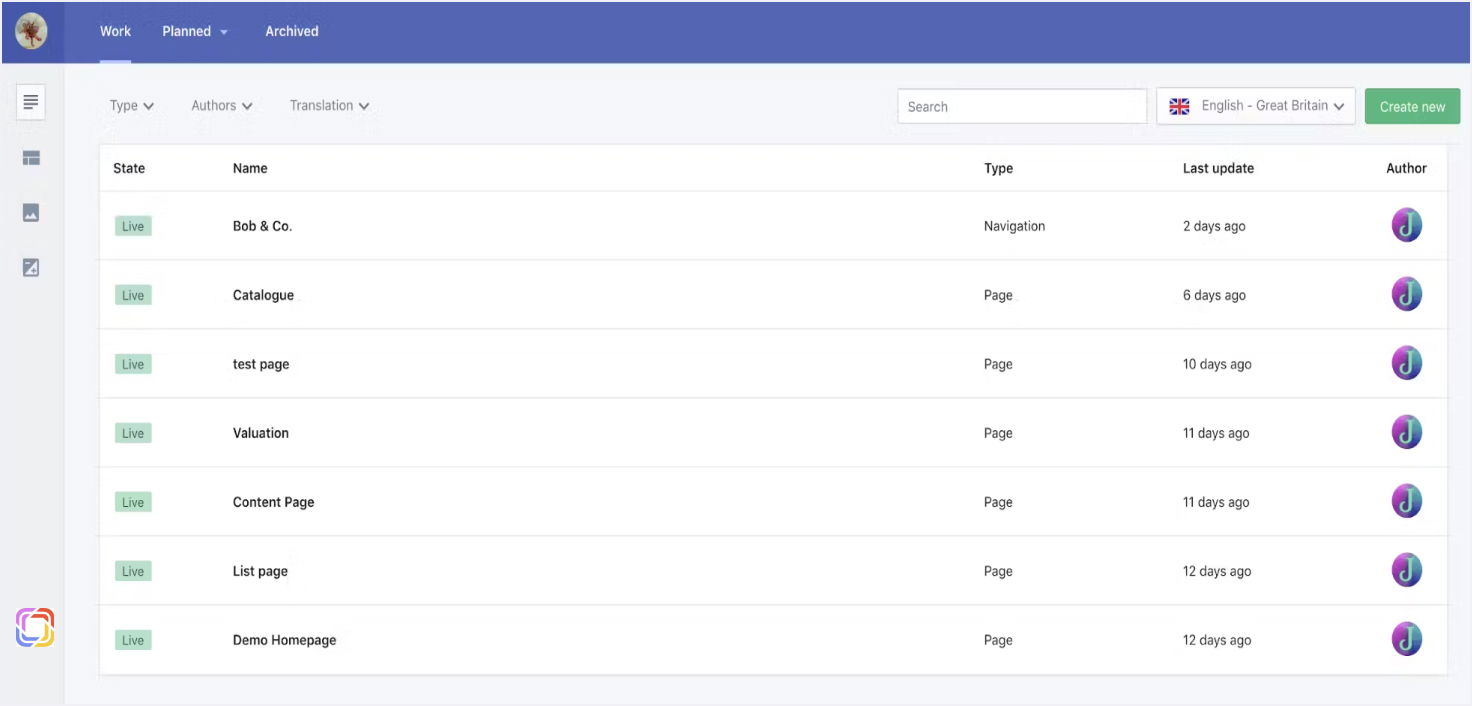
Prismic is a SaaS headless CMS that lets developers and marketers create and launch on-brand website pages faster. It maintains the efficiency of developing the projects, giving in content management.
Notable Features of Prismic
- Page-builder
- Webhooks and automation
- Preview and draft
- Localization
Pros of Prismic
- Provides tools to compose content seamlessly.
- Content localization.
Cons of Prismic
- Lack of custom plugins.
- Difficult to reuse data.
- Costly compared to other CMS.
Review
Prismic allows you to use the frontend framework of your choice. However, a feature is missing for clients to make their own components or page editions.
Source - G2 review
Pricing
- Medium - $100
- Platinum - $500
- Enterprise – Custom
8. Storyblok
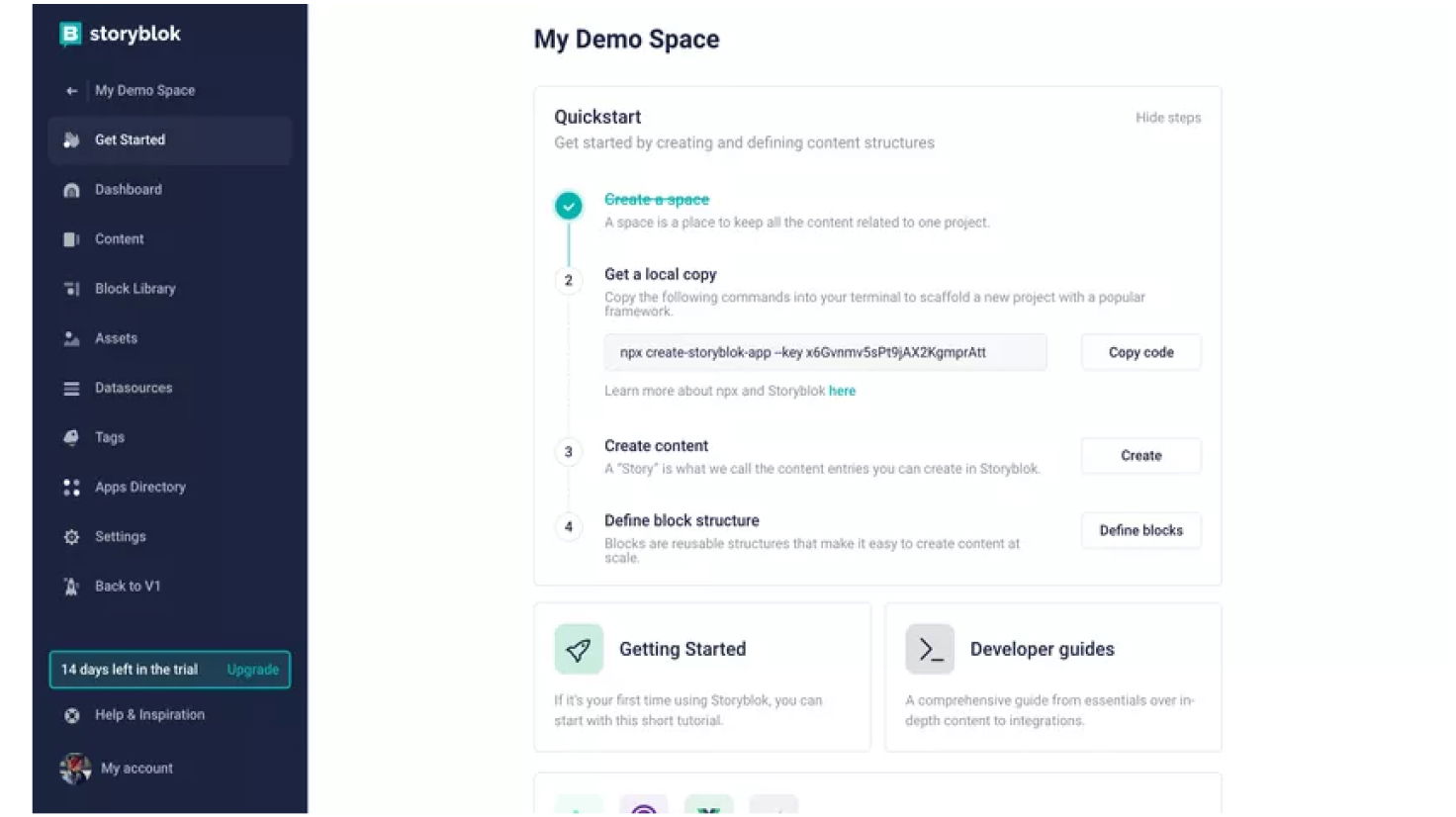
Storyblok is also a popular headless CMS platform. It helps to manage content for every digital device, such as mobile phones, desktops, and tablets.
Storyblok aims to empower developers and marketers to create digital content. It has a modern CMS structure loved by thousands of developers and marketers. It aims to deliver content in the fastest way.
Notable Features of Storyblok
- Custom extension for plugins and themes
- Live preview
- Visual editor
- Component library
Pros of Storyblok
- Real-time content delivery with webhook.
- Multilanguage support.
- Collaborative workflow.
Cons of Storyblok
- Limited built-in features.
- Expensive pricing.
- Limited eCommerce support.
Review
Storyblok has an intuitive interface. Not suitable for large organizations, and supporting staff have insufficient technical knowledge.
Source - G2 review
Pricing
- Entry - $90
- Teams - $411
- Enterprise - $2999
9. Sanity CMS
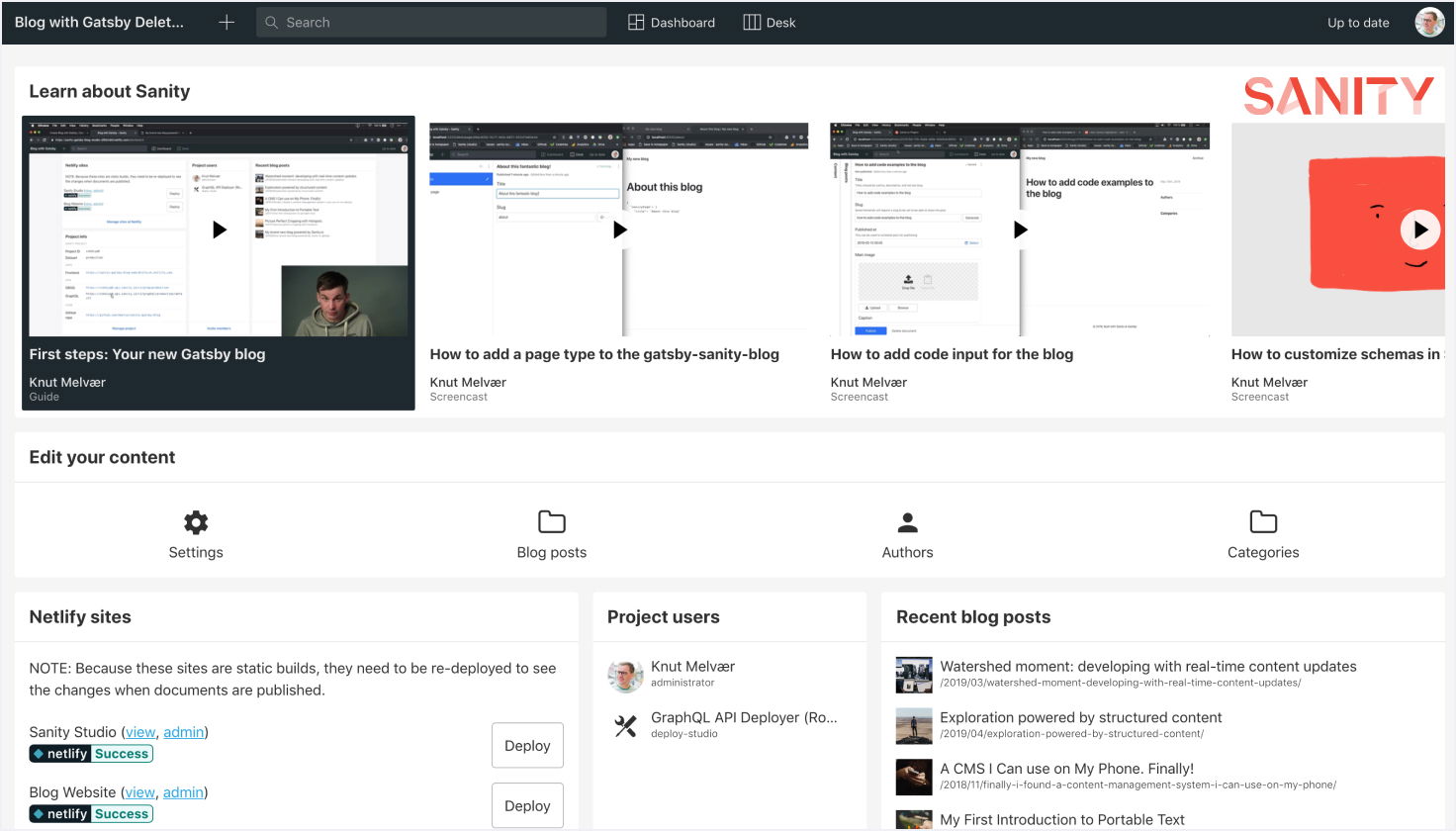
Sanity is also a popular headless content management platform founded in 2013. It is designed with the API-first approach, enabling delivering content on various platforms to be easy. It offers a flexible editing environment and real-time content lake.
Notable Features of Sanity
- API integration.
- Personalized content delivery.
- Reusable content.
- Multilanguage support.
- Unified content repository.
Pros of Sanity
- Easy to use.
- Role-based access management.
- Easy third-party integration.
Cons of Sanity
- Content migration is not smooth and takes time.
- Users facing issues with scheduling content.
- Changes preview is not up to the mark.
Review
It is difficult to customize the admin interface without the help of developers.
Source - G2 Review
Pricing
- Team - $99
- Business - $949
- Enterprise - Custom
10. Contenstack
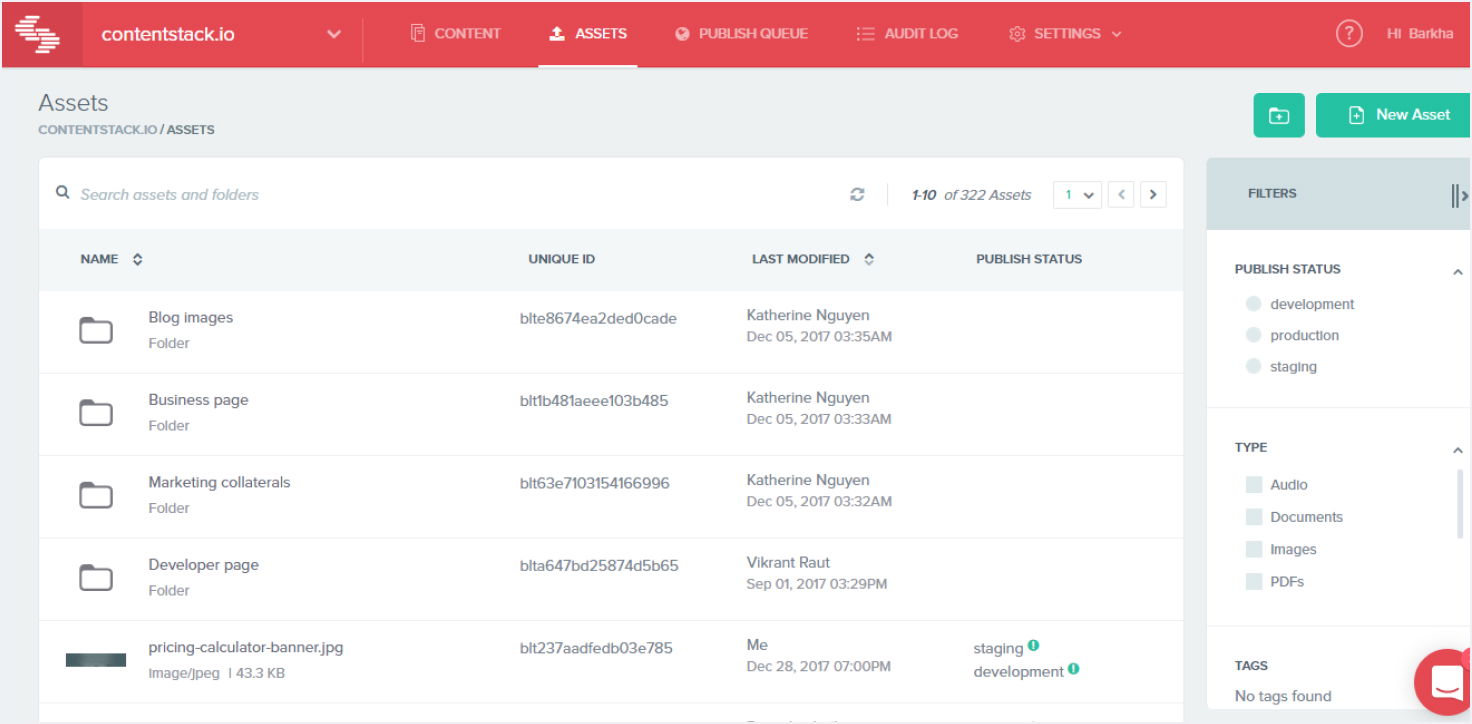
Contentstack is one of the best headless CMS. It is a composable headless CMS. It offers robust frontend hosting and full stack automation to simplify complex routine tasks. Contentstack is a microservice-based, cloud-native platform.
Notable Features of Contentstack
Add a line - Do you want to compare Contentstack with other competitors? Here's a comparison of Contentstack vs Contentful vs Experro.
- Composable commerce.
- Localization.
- Third-party integration.
- Analytics and insights.
Pros of Contentstack
- Centralized content management.
- Time-saving automation.
- Performance analytics.
Cons of Contentstack
- High Learning curve.
- Cost considerations.
- Integration challenges.
- Limited support for specific social media platforms.
Review
Asset management is easy and time saving. However, versioning is complex and confusing when multiple people are working on it. The merchandise needs to take the help of devs for updates.
Source - G2 Review
Pricing
- Available upon request
11. Magnolia
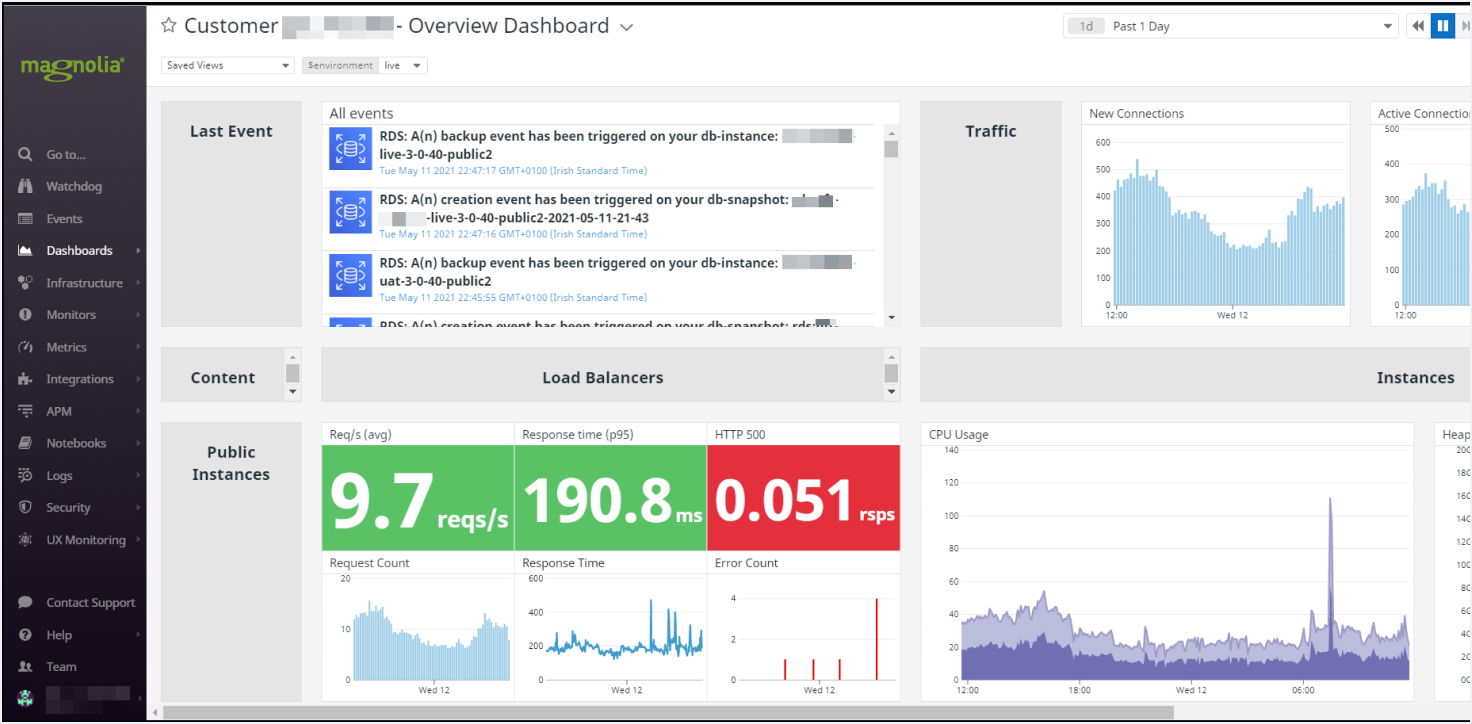
Magnolia is another best headless CMS using an API-first approach. Its UI and UX are intuitive, making it easy for beginners. It aims to speed up digital content delivery. It offers a wide range of features to simplify content management. Moreover, it provides in-built third-party integration.
Notable Features of Magnolia
- Content reusability
- Omnichannel content delivery
- Marketing automation tools
Pros of Magnolia
- User-friendly interface.
- Quick and easy setup.
- Regular updates and maintenance are handled by the service provider
Cons of Magnolia
- Higher cost compared to some open-source alternatives.
- Dependency on a third-party service.
- May not support all unique use cases or features.
- Potential performance issues due to external API calls.
Review
Robust content management system to create custom apps. The user interface is complex to understand, and while using angular js with magnolia, the process becomes very slow.
Source - G2 review
Pricing
- Starts at $3000 per month.
12. DatoCMS
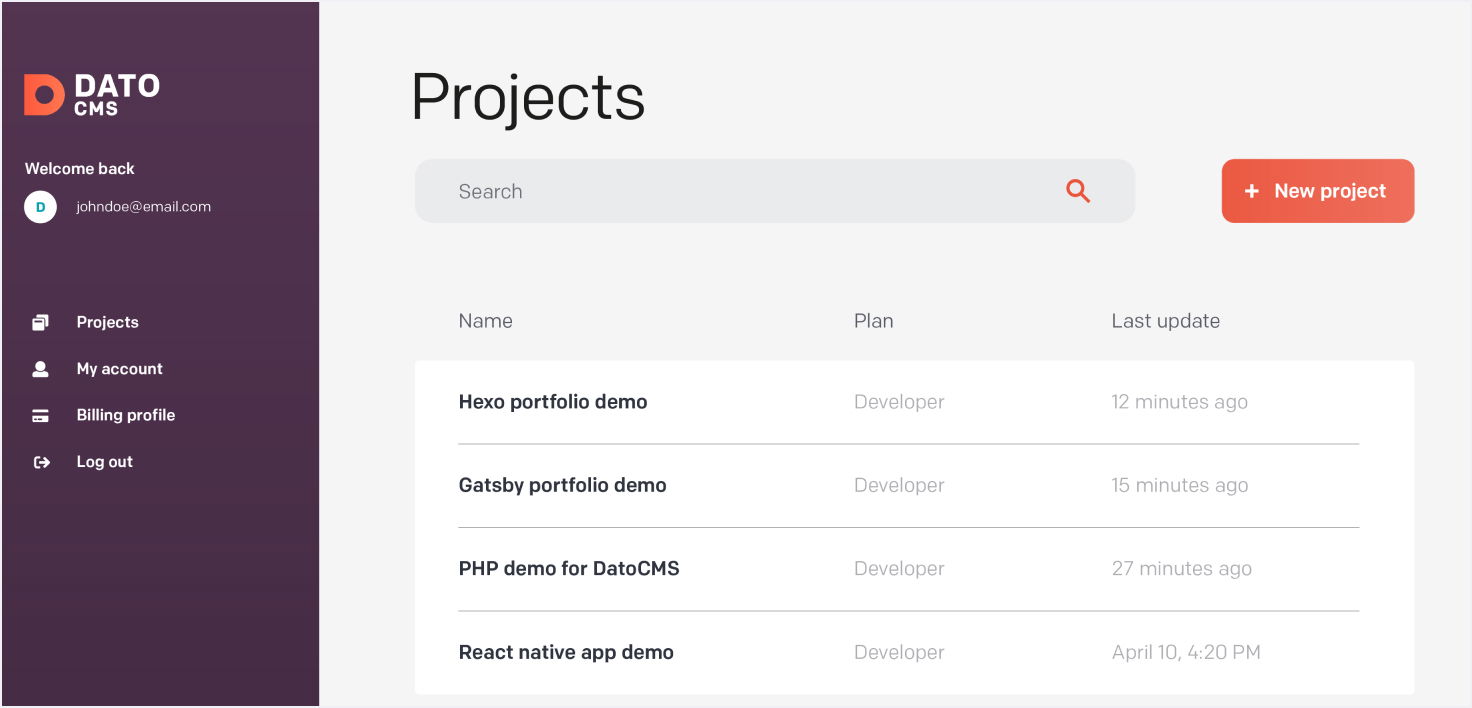
Dato CMS is a headless content as a service (CaaS) platform that helps businesses address the growing customer demands for faster and smarter experiences beyond traditional web and mobile app channels.
Notable Features of DatoCMS
- Multilanguage support
- Video API
- Workflow
- Dynamic layouts
Pros of DatoCMS
- Simple and easy interface.
- Flexible pricing options.
- Wide range of features.
Cons of DatoCMS
- It's challenging to update content in specific field types.
- Bugs in the interface.
Review
Configurable but requires extra support. You need to be dependent on your frontend developers for most tasks.
Source - G2 review
Pricing
- € 199 per month
13. Strapi
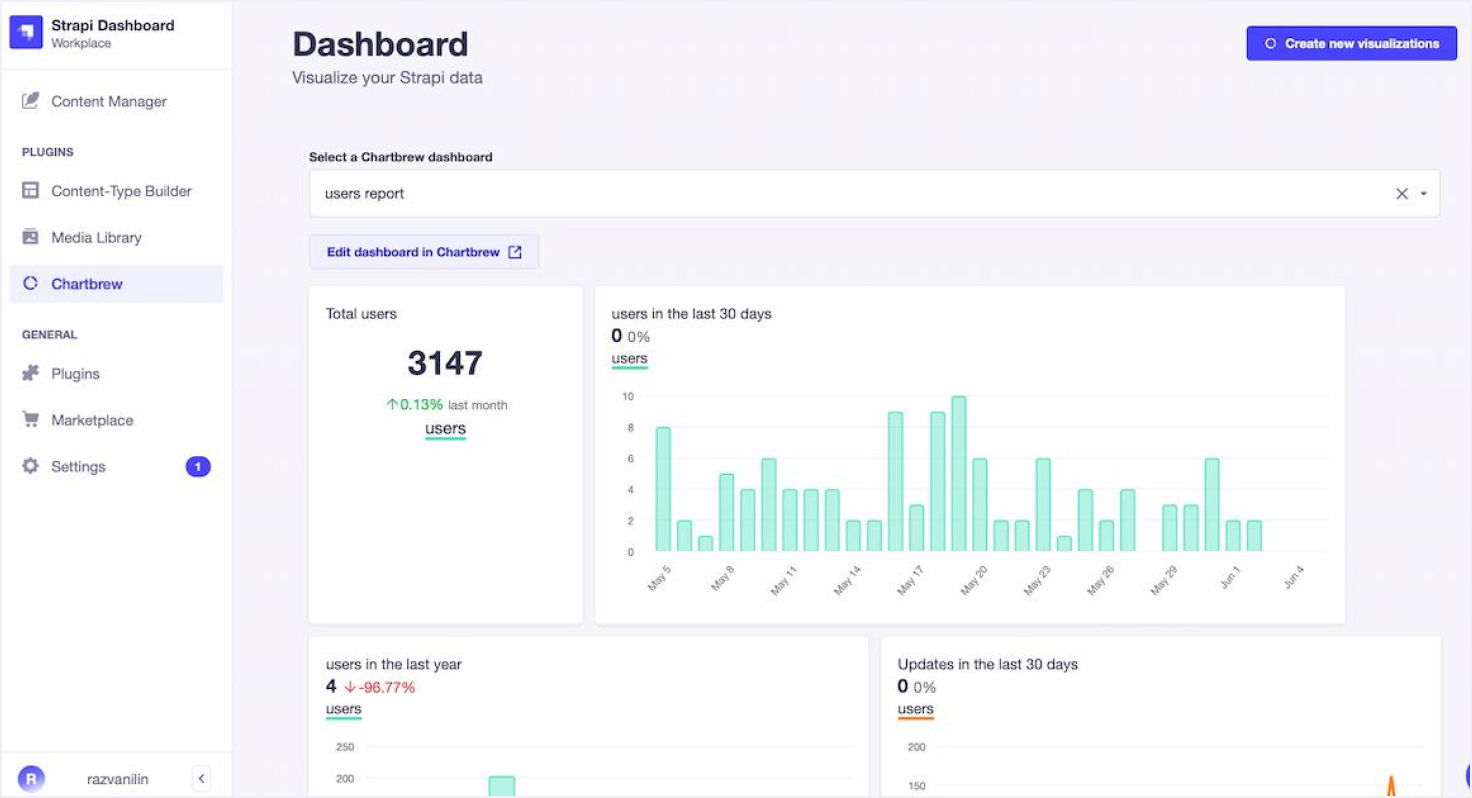
Strapi was founded in 2016. It is an open-source headless CMS platform built on Node.js. It is widely used to create, update, and edit content across the internet. It follows an API-first approach to deliver content across multiple channels.
Strapi supports RESTful, GraphQL, and WebSocket APIs. It is a self-hosted platform, allowing businesses to host servers of their choice.
Notable Features of Strapi
- Advanced media library.
- Granular access control.
- Customizable admin panel.
Pros of Strapi
- Third-party integration.
- API-first approach.
- Multilanguage website.
Cons of Strapi
- Challenging to migrate existing APIs.
- Less suitable for large-scale applications.
- Complex for beginners.
- It is challenging to manage a team and add more users.
- Multilanguage support is not up to the mark.
Review
Easy-to-use interface. However, it's difficult to manage the team and add more users for non-technical people.
Source - G2 review
Pricing
- Pro - $99 per month.
- Team - $499 per month.
- Custom - Contact sales.
14. Kontent.ai
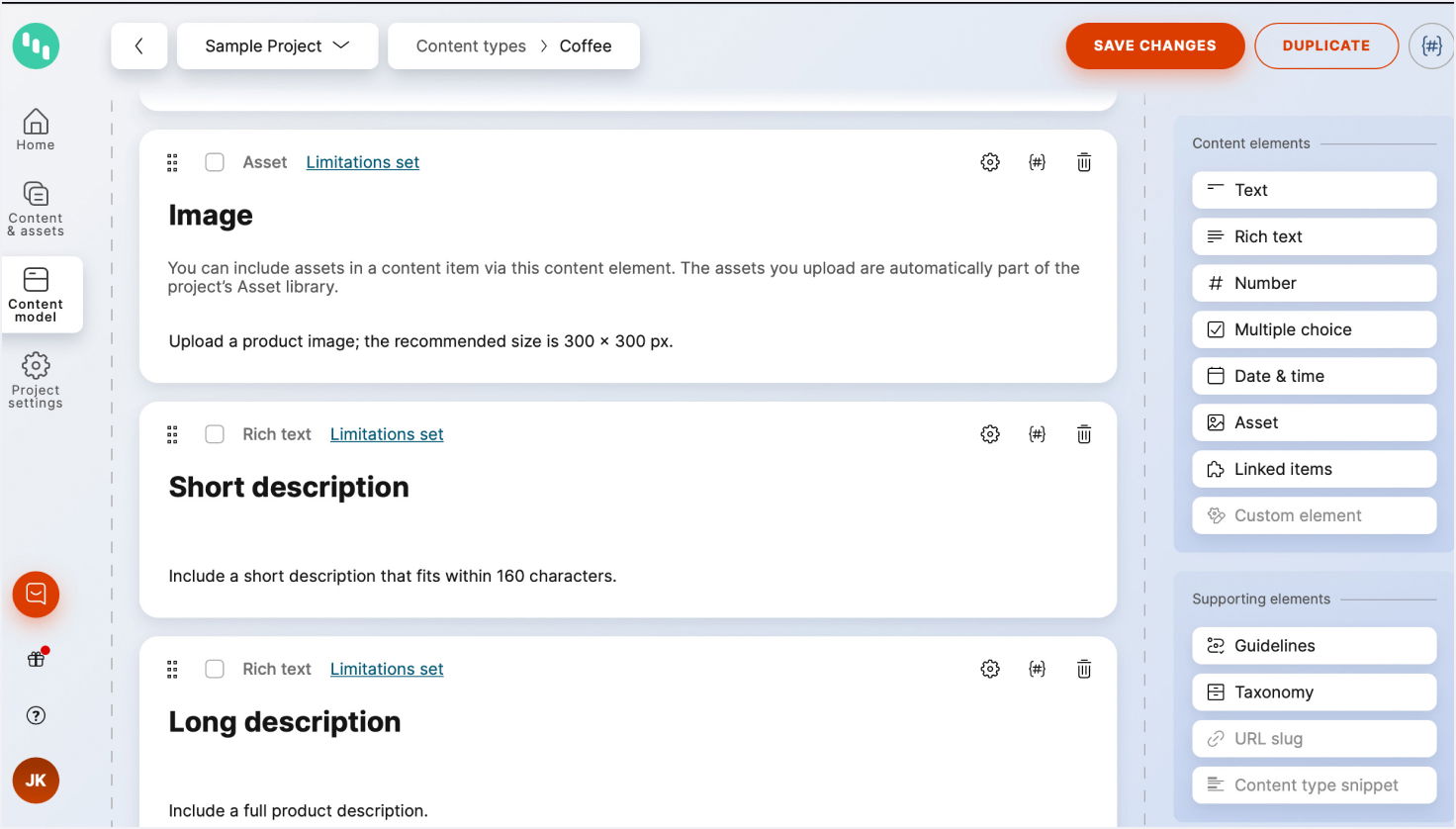
Kentico.ai is a content management system that governs all your content management activities. It helps with planning and creating content with real-time collaboration. It is an API-driven headless solution aiming to enable fast and secure development.
Notable Features of Kontent.ai
- Custom workflows and approvals.
- Localization and governance.
- Asset management for organizing digital assets efficiently.
Pros of Kontent.ai
- Easy to set up the user interface for marketers.
- Robust developer documentation.
- Easy to customize components.
Cons of Kontent.ai
- Integrating apps is limited to some extent.
- User roles are less flexible.
- Search functionality is not intuitive.
- It is expensive compared to other headless CMS options.
Review
Kontent.ai works with different tech stacks. It has limited options for third-party integration.
Source - G2 Review
Pricing
- Available upon request
15. Enonic
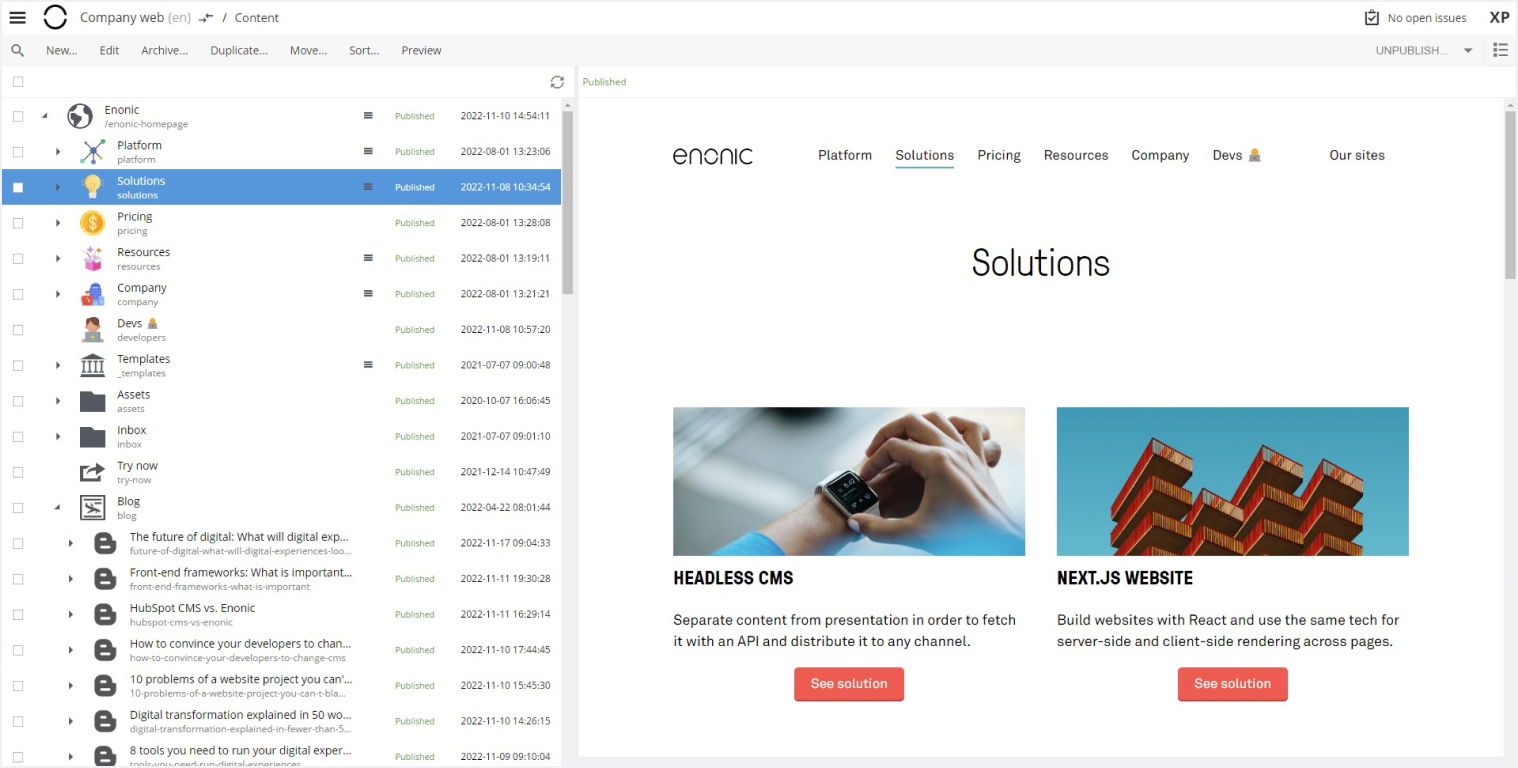
Last but not least. Enonic is a fully customized headless CMS, providing greater flexibility to developers and editors. It gives users freedom with no-lock-in to cloud services. It aims to simplify daily operations for developers, marketers, and business people with a unified content management platform.
Notable Features of Enonic
- Modern stack website.
- Content localization.
- Powerful search capabilities.
Pros of Enonic
- Easy to set up and easy to learn from beginners.
- Supports developers and marketers, both.
Cons of Enonic
- Lack of integration with eCommerce solutions.
- The community is not very large.
- The backend implementation for storing data is not optimal.
Review
Powerful and flexible platform. There is a lack of documentation to understand how the platform works. Getting expert developer help is difficult.
Source - G2 review
Prices
- Starts from $990 per month.
After handpicking the best headless CMS platforms, we have created a comparison chart based on ease of use and compatibility with the modern digital landscape.
Headless CMs Comparison | G2 Rating | Fit for the Modern Landscape |
|---|---|---|
| Experro | 5 | |
| Agility | 4.4 | |
| Hygraph | 4.6 | |
| Contentful | 4.2 | |
| ButterCMS | 4.7 | |
| Bloomreach | 4.7 | |
| Prismic | 4 | |
| Storyblok | 4.5 | |
| Contentstack | 4.6 | |
| Magnolia | 4.7 | |
| DatoCMS | 4.7 | |
| Strapi | 4.5 | |
| kontent.ai | 4.3 | |
| Enonic | 4.5 | |
| Sanity | 4.7 |
Conclusion
The shift towards headless CMS has paved the way for innovation and flexibility in the rapidly evolving digital landscape. As we've explored the 15 best headless CMS options, it becomes clear that each platform brings its unique strengths and capabilities.
Adopting the right headless CMS truly elevates the capabilities of developers and marketers and skyrockets business growth. Book a demo with Experro to explore the capabilities of one of the best headless CMS in town.
FAQs


Priya Zala
11 July 2024Through her writing, she has a lovely way of capturing users' pain points and delivering solution-oriented content. Her writing is sure to captivate readers and leave them with a lasting impression. When not crafting content, Priya enjoys getting lost in a good work of fiction, which soothes her soul.